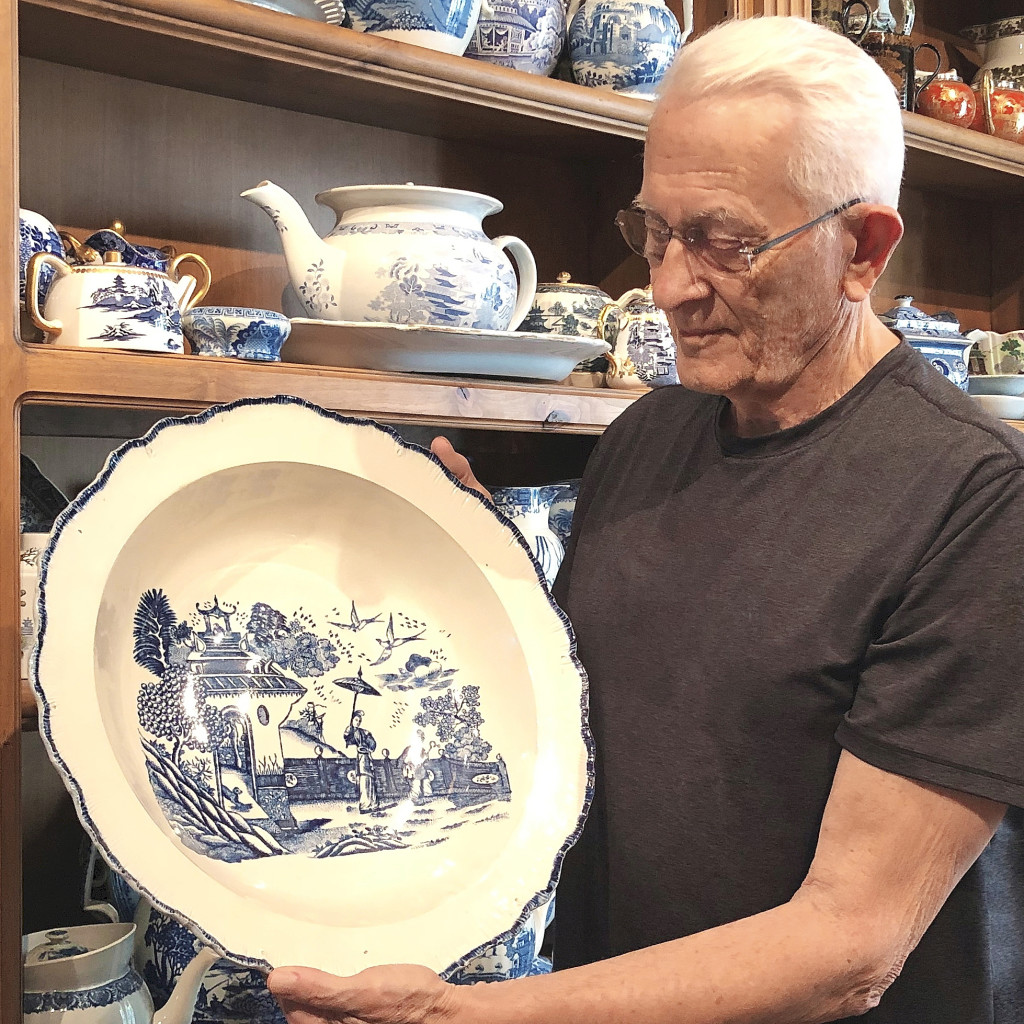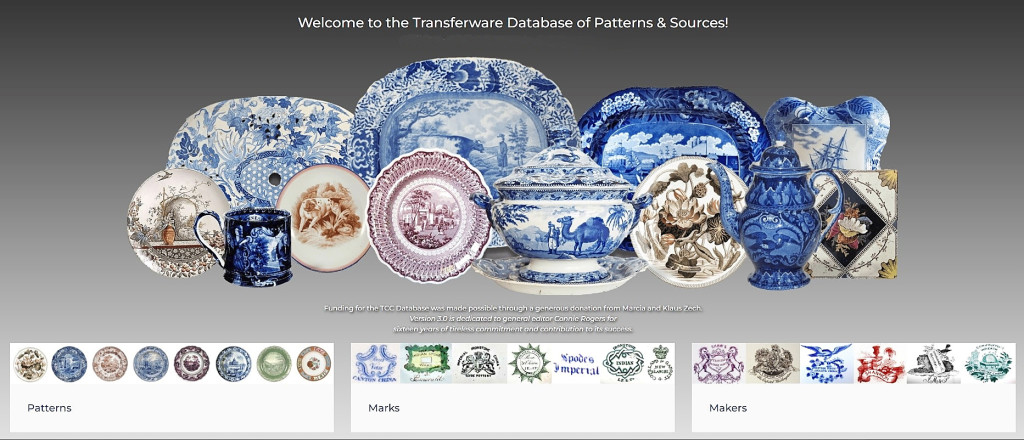The Transferware Collectors Club (TCC), whose mission is to educate and to serve as a forum for sharing information about British transfer-printed ceramics produced between 1750 and 1900, has recently launched a new version of its online database. Dr Loren Zeller, past TCC president, has led development of the previous two database versions and serves as the database manager. We took advantage of the news to ask Zeller about what’s old, what’s new and what may be in store for the future of the blue (and white).
Give our readers some history of the TCC database. When did it start? What is it able to do?
The Transferware Collectors Club was incorporated in 1998 and the Database of Patterns and Sources was launched in October of 2005 with just 500 pattern records. Today, it is a supported by an editorial staff of 15 volunteer ceramic experts and has grown to more than 17,260 pattern records and 1,080 ceramic and print sources with more added weekly. If a pattern is recorded in the database, our members will have access to documented information about its design characteristics, category, and, if it is marked, important factory production dates, mark type, print or original ceramic source, as well as published references to the pattern. A comprehensive bibliography is also available. Early users of the database, who continue to rely on it, were collectors, dealers, including eBay sellers, museum curators, and those engaged in ceramic research and publication.
You’ve recently made changes to it – what prompted the change and what has changed?
Yes, the previous database was built on an earlier version of ProcessWire, the open-source content management system (CMS) we use. While an application upgrade was certainly needed, the ever-growing volume of data called for a smart and substantial redesign that could enable a rapid search of the thousands of records. Another important factor was that, as our membership grew and became more diverse, so did its search requirements. This was especially the case when the world-wide archaeology community discovered that our database served as an excellent research tool enabling them to identify patterns and factory marks found on ceramic sherds in digs or in shipwrecks. They were quick to learn that content in our database could often help them place a small printed ceramic object in its historical context. There are exciting examples of discoveries at President James Madison’s Montpelier and at Colonial Williamsburg, to name just a few, resulting from their use of this database. Argentina’s National Council for Scientific and Technical Research relied on our database to date a shipwreck near Cape Horn by identifying patterns and marks from ceramics washed ashore. And there are many more discoveries reported by archaeologists from other parts of the world like Portugal, the Netherlands, the United Kingdom and Australia. Given these growing requirements, we worked with talented web developer Jonathan Lahijani to build this new release using the latest version of ProcessWire. The new database is more than just an upgrade. It is designed to enable users to rapidly conduct multi-layered searches based on a variety of features to identify a pattern or its maker.
How do people use the database?
Well, members can begin their search by viewing a newly developed short video demonstrating how to conduct a basic or multi-level pattern search. Once they familiarize themselves with the search process, they can explore the thousands of records available to them. I am pleased to say that we have now made this short video available on our website for anyone, including your readers, for viewing. Readers can copy and paste the link: https://www.transferwarecollectorsclub.org/members/database into your browser to access the video. While our editors have researched and documented the thousands of patterns recorded, they are adding new ones almost every day. Of course, it is always possible that the pattern for which a member searches may not yet be recorded.
What are your hopes for the database? What would you like it to do?
In addition to continuing to grow the database, I believe our next important enhancement will be to include image search and recognition in the application. We are currently exploring this possibility.
Do you foresee any additional changes down the line?
I think our focus will be on continued growth and further enhancements to its search functions. Funding for this and the previous version of the database was generously provided by TCC members Marcia and Klaus Zech. Ongoing operational and development support is assured by fees from the club’s membership and activity revenue. We continually recruit highly qualified volunteer editorial staff to support content growth and enhancement.
Who has access to it?
Club members have full year-round access to the database. Nonmembers can purchase a limited-time 24-hour search for just $10. If they decide to become a member after this limited access period, they will receive $10 off their full membership. Individual (Household) Memberships for up to two people per member household is $50 (US), $60 (International). Business/Institutional Memberships (Multi-User) are available for just $100 (US), $110 (International).
Are there similar databases out there?
Yes, two clubs focused on antique ceramics that come to mind are the Flow Blue International Collectors Club’s Pattern Identification Database, and the Tea Leaf Club International’s Identification Guide & Handbook. When it comes to American ceramics, I think The Marks Project has developed a well-respected, web-based resource titled A Dictionary of American Ceramics that features marks usually found on the bottom of ceramic objects created by potters, ceramic artists, and sculptors from 1946 forward.
—Madelia Hickman Ring






